Previously on Picture Book Maker(s):
I had an itch.
"Once upon a time there was an Itch.
Simply, an Itch."
-The Bear Who Wasn't There by Oren Lavie & Wolf Erlbruch
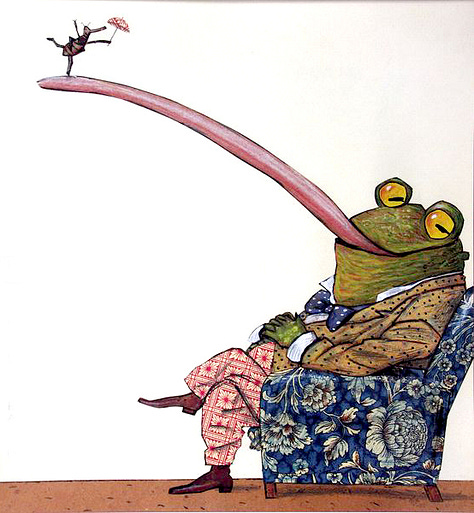
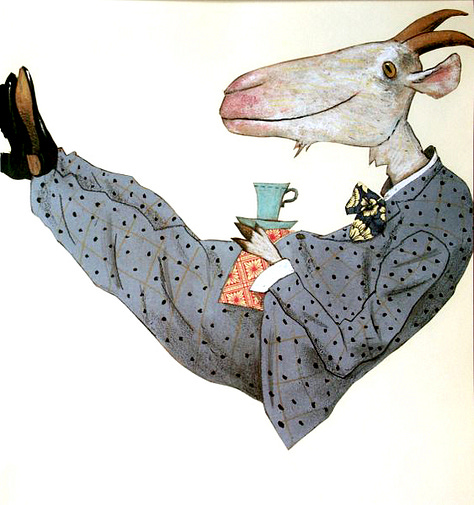

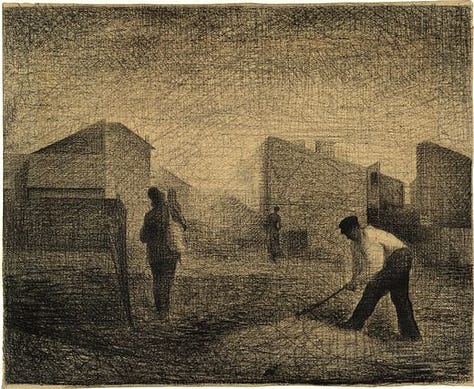
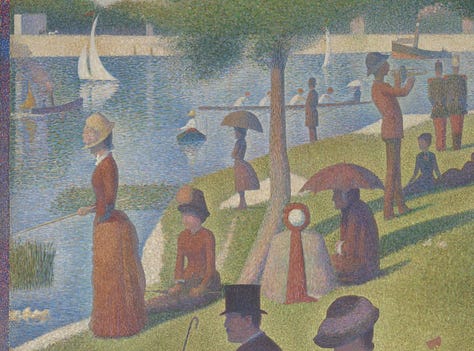
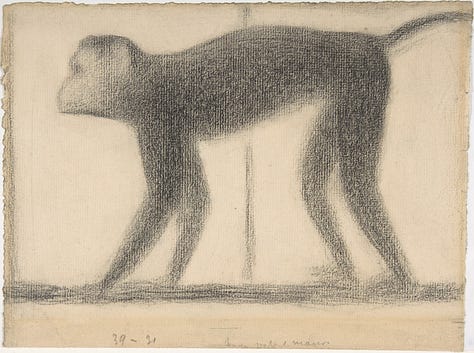
It was 2016 and I was a recent college grad, Wolf Erlbruch and Georges Seurat were my inspirations at the time (and like a Mitch Hedberg joke, I am still inspired by those artist today). I also had recently read, Picture This by Molly Bang, which was pushing me to clarify my drawings and think in shapes, circles, squares and triangles (also a fantastic trilogy by Jon Klassen), be as concise and clear with my illustrations as possible. I don't have many sketches from that time, but I remember sketching hundreds of compositions of shapes with eyes at that time. I also spent time experimenting with drawing with my non-dominant hand to try and get a new feel to drawing. There was a desire to lean into drawing the line and motion by feel vs what my mind wanted to dictate when drawing with my dominant hand.
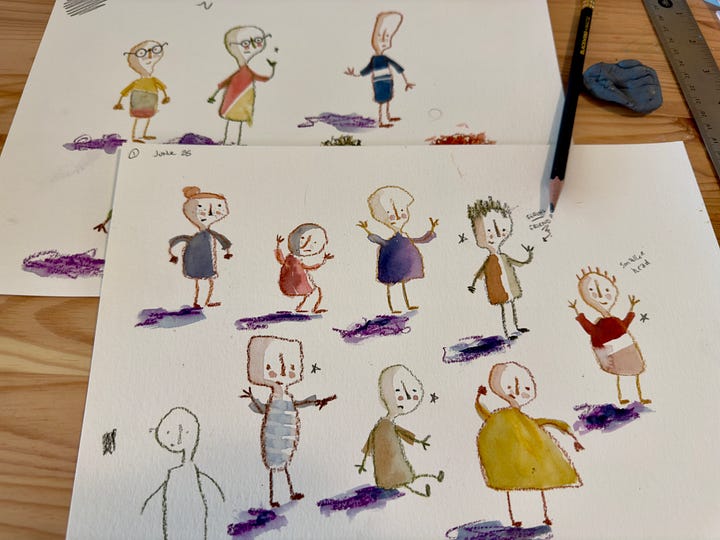

In this work, I uncovered the characters that I write stories about today, with Fox being the first. A drawing born as a direct contrast to my non-dominant crayon and water sketches. The clear rectangles and triangles served as a bridge, as I took direct inspiration from Seurat's graphite drawings, creating a bundle of shapes, stealing the shading style of Seurat to enhance the extremities of the character silhouette to create the visual line. Working without a drawn line, instead creating the illusion of a line as the character weaves in an out of the color of the paper, just as I adored in Seurat's works. I was captivated by the shapes and silhouettes I'd created, and sought to borrow Erlbruch's palette, resulting in a whimsical, saturated pastel-like set of colors that leap off white and cream backgrounds.
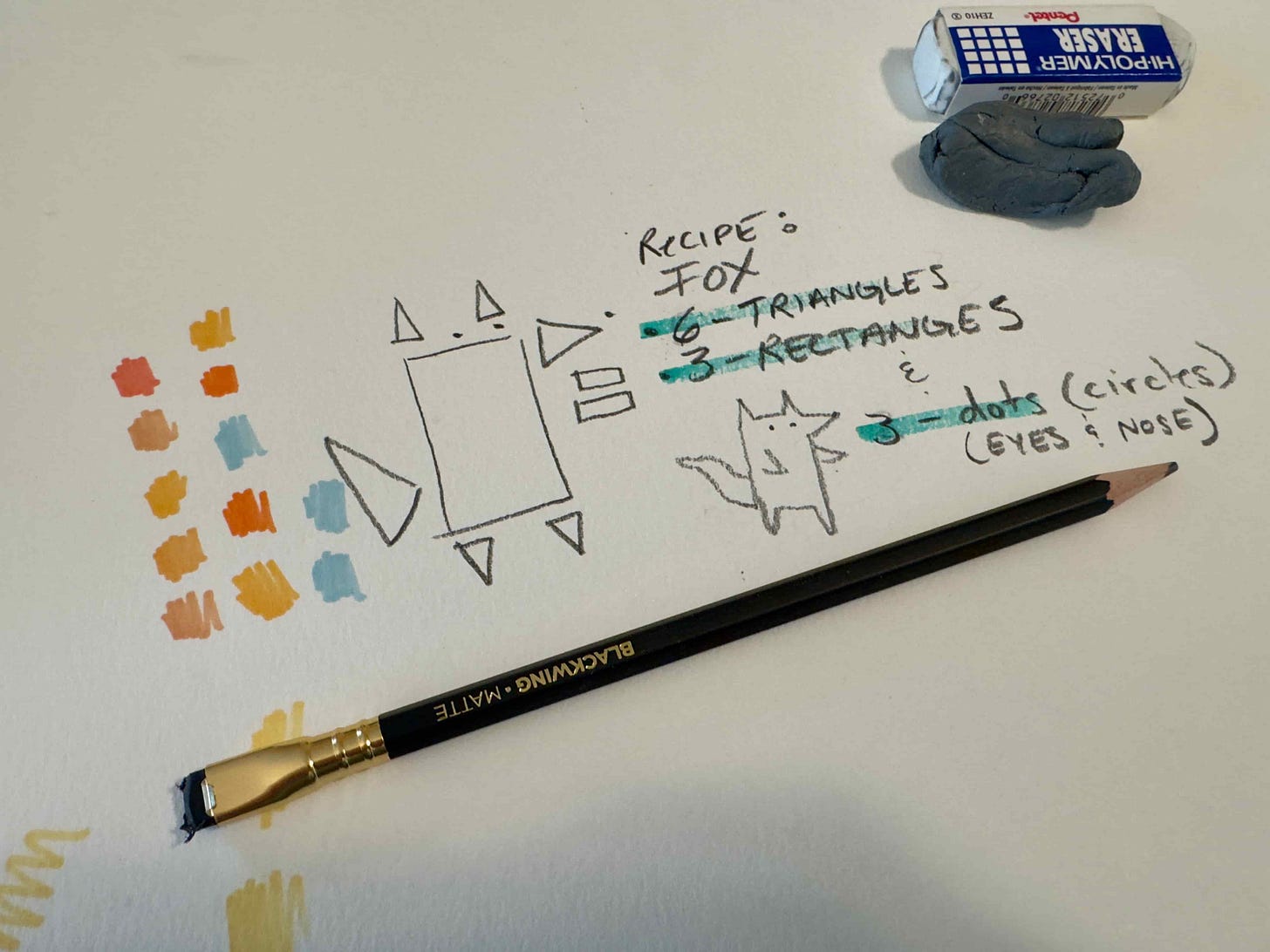
During this time, I was deeply committed to preserving the original shapes as closely as possible, aiming to distinctly identify each shape within an illustration and each character. I wanted to be able to pick out any shape used. I had also developed a style that was interested in using shading as much as possible vs a direct line. My process has been mostly unchanged in that aspect as I use mechanical graphite pencils or newspaper graphite pencils to lightly build up layers of graphite on a textured surface, I really hope the paper I am using stays in stock… it has become harder and harder to find over the years. This softness and textured look mimics Seurat and with my color pallet, it gives it an impressionist (easily my favorite art movement) and minimal look, again, always attempting to focus on shape and what is absolutely necessary for the page and story I want to tell. Over time I have also utilized this idea in my writing, in constantly nitpicking the story into only the absolute necessary truths, being clear and concise to the emotion I want to convey, the rest is just visual and textual glitter.
Sometime later, at about quarter past Once upon a Time, the Itch wandered by tree and started to scratch against it. Now a very strange thing happened: the Itch began to grow in size. In fact, the more it scratched the bigger it grew.
That's funny thought the itch and kept scratching.
A minute later fur began to cover the Itch, and the fur grew arms and legs and a nose, and before long the Itch looked very much like...
-The Bear Who Wasn't There by Oren Lavie & Wolf Erlbruch
Now what? Story time.
A quick timeline of what happened from my first sketches of Fox (see above) to today:
2016 to 2021, I created the first sketches of Fox, Duck, Rabbit and Bear, and they are mostly unchanged to this date. I didn't know the exact story then, but a lot of my ideas for a story were around friendship, as I had these 4 characters and I wanted to lean into utilizing them all in a single book.
My original thought for Fox involved many surreal and whimsical scenes of imagination as Fox was playing in this box, a lot like that one SpongeBob episode (as a 90’s child, there isn’t a day that passes that doesn’t include some form of SpongeBob quote, also early SpongeBob surprisingly has quite a few really heartfelt episodes). Originally, Bear was a villain that stole the box and such, and things would happen with the whole group. That story never was fully written and it was quickly changed to a lost Fox that left home and stumbled upon a box in the woods. Looking inside and happy at what they saw, they were then bumped by a Rabbit, who wanted to know what was in the box, but Fox did not say as they shared a moment together. Then Duck bumped into them both and wanted to know what was inside, but again Fox played a game and they had to guess. Then Bear bumped into them, who was actually around the whole time (visually shown/hidden in the drawings) and demanded to see the box and stole it. When it was opened, Bear was disappointed by what was inside, which was a mystery in the end. We followed Fox, Duck and Rabbit as they ran away and they were back at Fox's home sharing a meal together.
This version of the story was always in a draft stage because as I was working on this version of the story I realized I had a lot I wanted to say with the story, but it was too much and everything became muddy and unclear as I was crafting this book. This story was unclear in what I wanted to say. I thought I wanted it to be about being alone, but that it is ok and good to be alone, but we also need friends and people to share moments with and they will leave and I kept trying to fit in all these ‘buts’ into the story. So I broke it down and clarified what the main emotion was. In life you will make friends and they will sometimes leave. And that’s ok. It’s normal. This clarity helped me stay honest to my audience as well as drastically changed my book from one story to many.
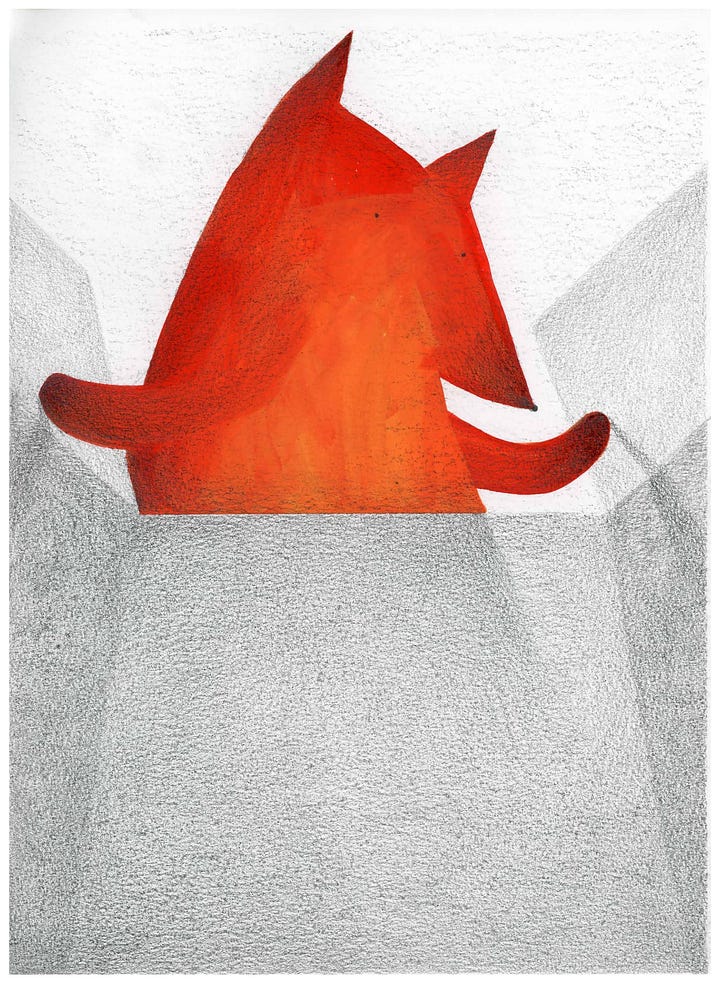
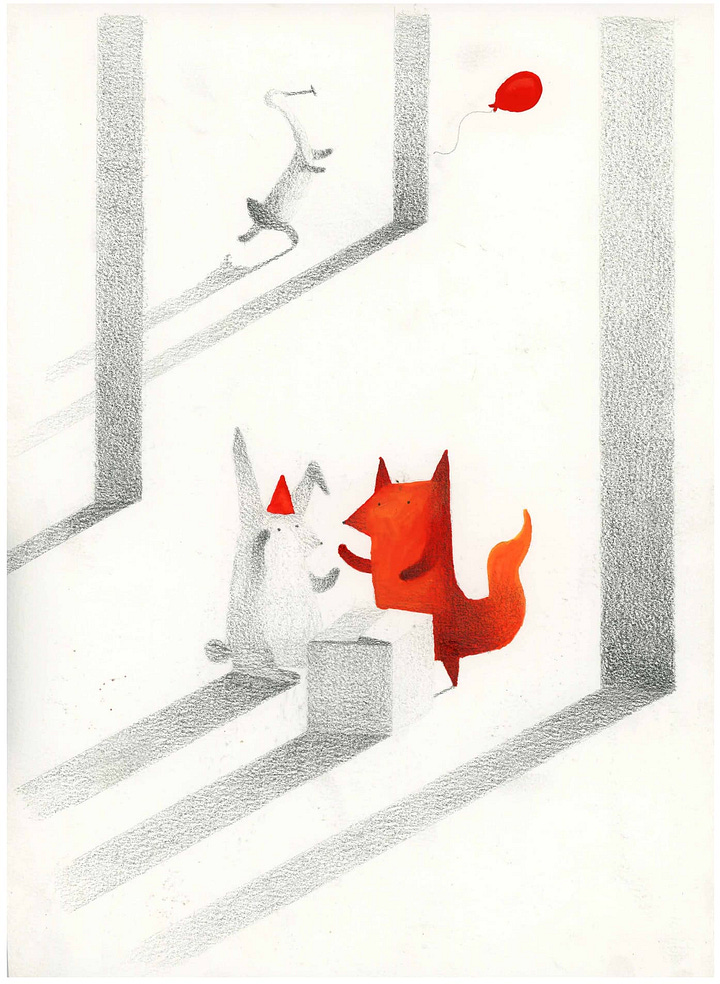
2021, During this period, my creative process was very insular. I spent time attempting to share on multiple social media platforms, but I have always struggled with 1.) being comfortable sharing my art and stories 2.) having a desire to keep up to date with social media, it just isn’t my ‘jam’. I also have never felt like a writer, English was my least favorite subject in school and I struggled with it the most. I still don’t know the rules of grammar and general ‘good’ writing practice but I have accepted that and try to use it in a way that allows me to setup my stories and artwork. So I apologize to those who struggle to read my post, Microsoft Word has some immense lifting to do when I start writing, and sometimes it can’t even salvage what I’m attempting to say.
My approach was initially instinctive, drawing from remembered childhood books (Don’t Eat The Teacher by Nick Ward is a book I will never forget, pick it up and read it as animated as my mom did) and personal creative directions. It wasn't until later, after multiple iterations of Fox, that I began to evolve my practice. I started reading picture books more and more, studying them, dissecting them like a frog in biology class, but with more respect. This shift completely changed my practice and how I go about telling my stories. By pausing my own work and immersing myself in other artists' creations and their methods and the history of picture books, my studio practice began to flourish with new ideas. I try to share those dissections and revelations here, so.. shameless plug, subscribe if you enjoy discovering the ins-and-outs of picture books and their history.
My artistic approach also underwent significant changes during this time. Early iterations of Fox utilized techniques similar to Lane Smith (you smell that? smells like a stinky cheese man, another great, must read picture book) or Drew Struzen (movie posters of the 80’s), oil paints with fixative spray (the fixative spray causes the oils to dry quicker which creates a chemical reaction that creates that fuzzy, crackle like texture) and airbrush over top. However, practical challenges like the laborious nature of oils and the nauseous smells of the chemicals pushed me to find alternatives. I explored digital media, colored pencils, and various techniques before settling on a process that felt like it was actually a part of me, combining graphite, markers (these still smell, but I guess the artist is just destined to always be partially suffocating from their craft), and oil pastel crayons.
Throughout these experiments, my primary goal remained consistent, preserving the textural quality I loved in my original work, the graphite must live! While watercolors offered vibrant colors and pigment control, their unpredictability often compromised the paper which diminished the graphite texture I cherished.
Today, alongside Fox, I had completed Rabbit and Bear, with Duck nearing completion… sometimes I feel I have taken too long with these stories but as we will learn, I had to live out and experience all of my stories before I could truly tell them.
Wait Just a Minute!
Lingering questions I'm still trying to figure out.
What typeface to use?
This is one I am still back and fourth on. For along time I had settled on a serif, because, even though the story follows a Fox, I felt this story as very human so I wanted the type to reflect that concept directly, but from reading some very early picture books that are considered to have started this current idea and era of modern picture books, Millions of Cats by Wanda Gag or The Pirate Twins by William Nicholson or Clever Bill also by William Nicholson with handwritten text paired with the illustrations. But I am hesitant for that because of the accessibility and readability of handwritten text but I love the touch of human the handwritten text brings to the visual of the story.
What about the title, Fox, really?
I've always enjoyed the simplicity of the titles as the 'name' of the character. But as time passes, I think I will come up with other titles that revel the story a bit more. I think I could do some 'neat' things with the titles to allude to the story and the themes I have in my stories.
Why are you starting with Spread One? Shouldn't we start with the cover?
Maybe, but I wanted to share these post in the way I worked on this book. I came up with the visuals of the characters which spawned stories I wanted to tell, which then lead me to illustrating a lot of the story before I had a rough draft of the text. Plus, in working on the Cover, End Pages and Title Page I had a lot of back and fourth with myself and my critique group on what, how and how much to reveal of certain aspects of the story that I was unsure of until I actually finished the story beyond those elements.
This post kind of got away from me and became a bit long, necessary but also long. So I am going to end it here and send out my thoughts on my first spread of Fox in a day or two.
Thank you for reading, and patience.
-Caleb
P.S. Remember, celebrate the handmade.

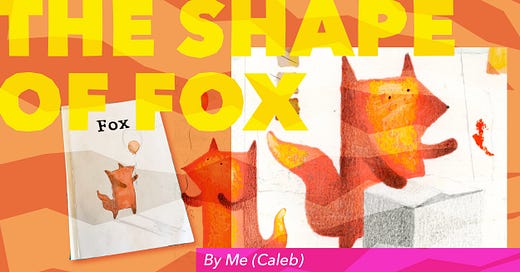




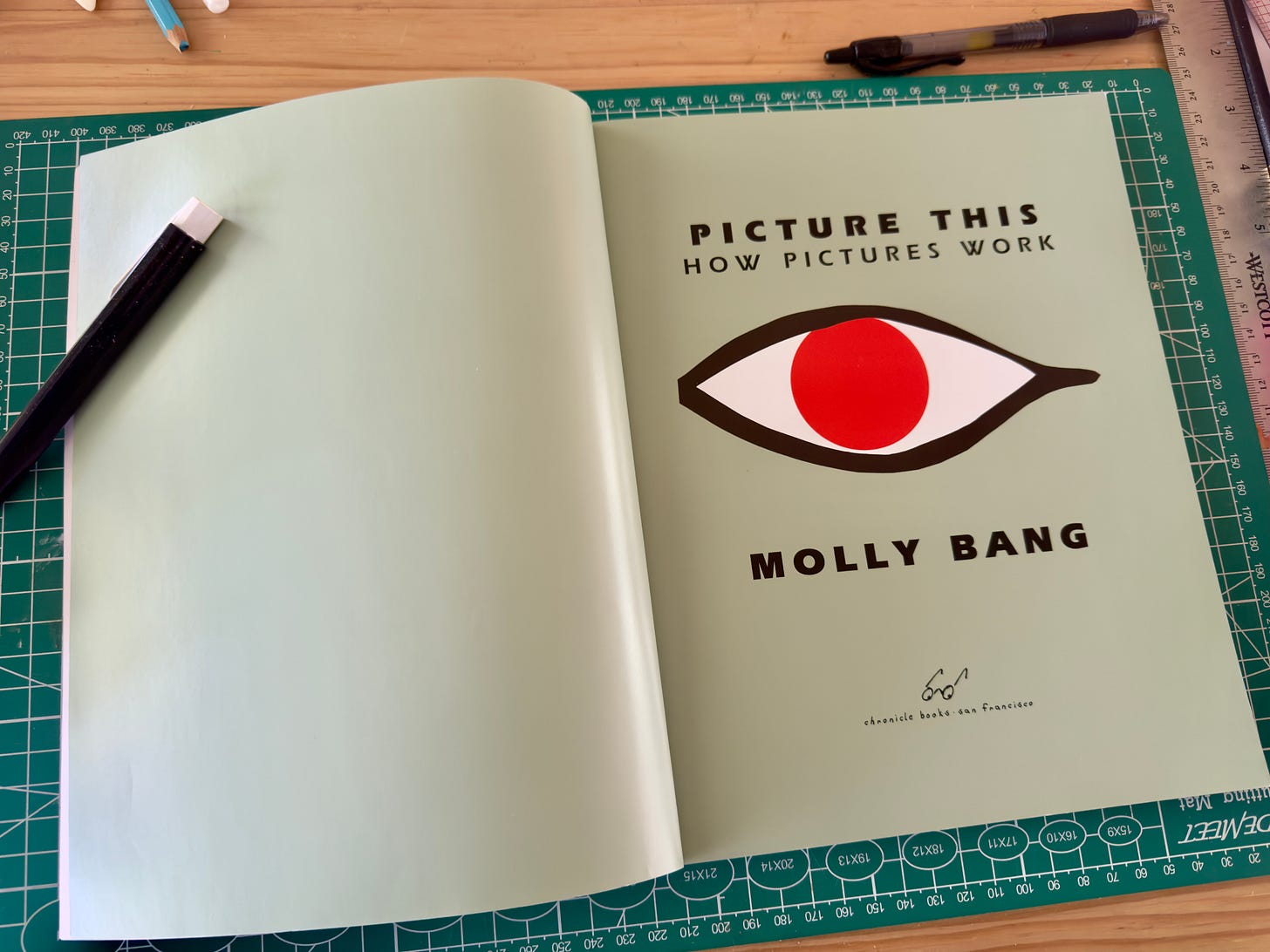
Huge fan of Wolfs. Duck death and the tulip is one of my all time favorites 💀🖤